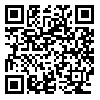BibTeX | RIS | EndNote | Medlars | ProCite | Reference Manager | RefWorks
Send citation to:
URL: http://jria.iust.ac.ir/article-1-548-en.html
“Islamic-Iranian Model of Architecture” is the strategic scape proposed for future of architecture of Iran. So guiding higher education courses towards this goal could be seen as their mission. In this respect and among architectural graduation courses the course of “architectural technology” has the potential to take leading place because it is attached directly to institute of technology as progressive force of the world today. But this may be its weakness as well as the technology tends to deny any locality in its nature. In its syllabus the current architectural technology course has been ill-attached to cultural priorities. So most recently a two-credit unit is added to its content called “Wisdom of art and technology in architecture”. It seems that the main mission of this class is to describe the technology from the view point of Islamic Wisdom so that prepare an appropriate theoretical stand for architectural technology students. This article is aimed to draw a conceptual framework for technology within Islamic system of world-view. So at first it is tried to locate religious view amongst context of philosophy of technology. In this respect the four-part categorization of Carl Mitcham is taken as main framework of discussion where technology is seen from four directions: physical products, types of knowledge, forms of procedures and goals. He makes a differentiation between religious technology, craft technology and scientific ones. To make a proper relation between Islamic views and current philosophy of technology another division of Mitcham is also taken into account: humanities views versus engineering ones. Humanities philosophy of technology refers to those attempts of philosophers who try to make descriptive insights to essential qualities of man-made tools so the traditional branch of Hikmat (philosophic work of Muslims) can be interpreted as a kind of engineering philosophy of technology. These philosophic analyses try to make a spectrum of creative force from God to human and describe why all man-made world is related to unity of the world. There is no obvious critical debate among traditional philosophic works of Muslims. Three subdivision here are Mash’a’ philosophy of Farabi and Ibn-e-Sina, Ishraq of Sohravardi and the composite reading of Molla Sadra that their influences on debate of technic are respectively considered in Ehsa-o-loloom (Farabi), FotovvatNames (unknown authors) and Resaleh-Senaeieh (Mirfendereski). The critical stand point of humanities branch could be traced among some current attempts of Islamic intellectuals who are originally affected by western critical views. These works are categorized in three groups: social oriented ones are those who see some weakness in Islamic society relation with new technology but put the blame on Muslims’ social approach not modern technology. The so-called Islamic enlightment throughout 150 recent years pursued this way. Among this group Ali Shariati’s thesis of four human’s prison is studied here. The second approach that could be called new-realism that is affected originally by works of Islamic cleric Allame Tabatabaii and then rational positivism of Poper is mainly known with name of Abdolkarim Soroosh who after a modest criticizing of modern technology without denying its positive effects, puts self-protection and independent will towards non-consumerism society as main tool for damping negative effects of new technology. The third approach is a Heideggerian one merged with intuitive school of Sohravardi and Ibn Arabi. Its proactive leader was seyyed Ahmad Fardid and until now has its own followers. In terms of technology this approach is more Heideggerian than Islamic and sees the rescue from evil force of modern technology unavailable unless a great change occurs in in human ontological world.
All six approach described here have some basic weaknesses for current situation either from descriptive view or from critical perspective especially in terms of architectural technology problems. So a new approach is designated here that looks for a fundamental map of relation of three major players: Islam, Human and Technology. Three keywords are used to reach to a basic platform for the debate: humanized Idealism (Kamal), ethical duty orientation (Taklif) and intellectual religious scrutiny (Ejtehad). The first term (Kamal) makes the main criteria of human change in the natural world and describes why the God (Allah) not only allowed the mankind to make changes in nature but also wanted him to do so. But Kamal is at the same time a restrictive term in Quranic view because it makes dependence among all creatures so that the growth of them is linked to each other. This semi ethical meaning of Kamal is strengthen by more ethical concept of Taklif. Taklif in Islamic context in contrast to Kantian sample is not an ultra-real one but is a deep real and objective phenomena that draws brilliant lines between various rights and duties of not only humans but also all creatures. Here four basic types of Taklif in Islamic view are used to make the main model of ethical evaluation of technology that are four responsibility of human: responsibility for Allah, for the self, for the others and for the environment. Each of them has its own content in Islamic context and has a specific relation with technology that makes them very appropriate for the aimed model-making. Here otherness of every four is considered priory to unity of the “I” and them. So the responsibility is definable and evaluable. Finally this new approach is summarized in a table that can be used for weighting technological inventions in architecture.This table views every technological changes from to basic point: 1. If the technology is harmful for any of the for basic rights. 2. Whether it is generative for the four human relations or not. All evaluations are linked to the Islamic life style but the models of this text can be seen as independent from Islamic context as well.
Received: 2016/12/20 | Accepted: 2016/12/20 | Published: 2016/12/20
| Rights and permissions | |
 |
This work is licensed under a Creative Commons Attribution-NonCommercial 4.0 International License. |





